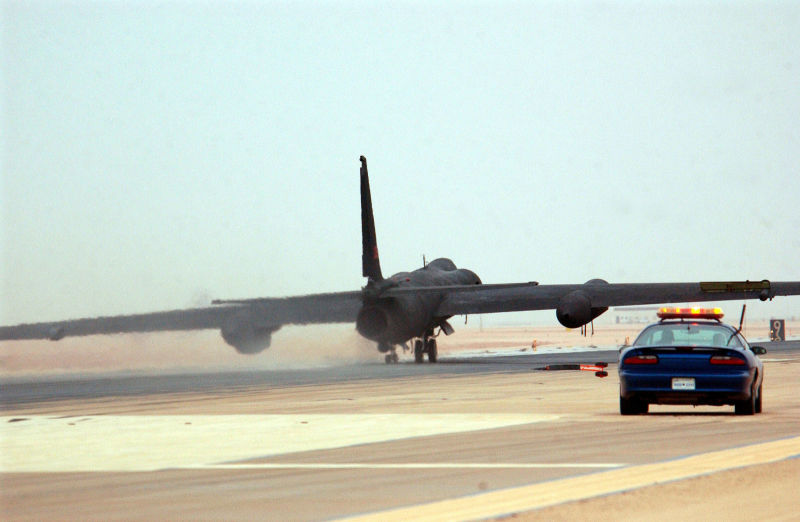As you watch this video, you can see that landing a U-2 isn’t an easy task to accomplish, the Landing is Accomplished With The Help Of 140-mph Chase Car!
The U-2 spy plane, Dragon Lady, is notoriously difficult to land because it has a tendency to hover over the runway and is very susceptible to any type of turbulence. As it approaches the runway, the cushion of air provided by the high-lift wings begins the stall effect to reduce lift on the wings and helps to provide equal stall effects, thereby minimizing wing drop, especially during strong winds.
Landing a U-2 is so difficult that a chase car and a second U-2 pilot are assisting the U-2 pilot in the air with the angle of descent, decreasing aircraft speed, and altitude height as the aircraft descends.
Another surprising aspect of the Dragon Lady spy plane is the landing gear itself. When it has safely landed you will see that, instead of the typical three wheel landing gear, the U-2 uses a bicycle wheel formation with the primary front wheels situated just behind the pilot’s cockpit and the main set of rear wheels behind the engine.
The rear wheels are joined to the rudder to provide steering during taxiing and after touchdown. To provide the proper stability while taxiing, two supporting wheels, called ‘pogos’, are attached prior to takeoff. These two auxiliary wheels fit into sockets installed at the center and underneath each wing and drop off during takeoff.
To protect the wings once the U-2 has landed, a titanium skid is attached to the bottom of each wingtip. These skids are necessary because after the U-2 comes to a halt, the wingtips will slam to the ground. The ‘pogos’ are then re-installed under the wings by the landing crew one wing at a time, after which the Dragon Lady U-2 spy plane taxis to its hangar.
Video
A pilot from the 99th Expeditionary Reconnaissance Squadron, explains the role of mobile chase cars for the U-2 Dragon Lady spy plane from an undisclosed location in Southwest Asia on 22 December 2015. The drivers of the mobile chase cars represent a second pair of eyes and ears for U-2 pilots during takeoffs and landings, making up for the pilot’s limited mobility and sight.
Video by Staff Sgt. Estrella Martinez
